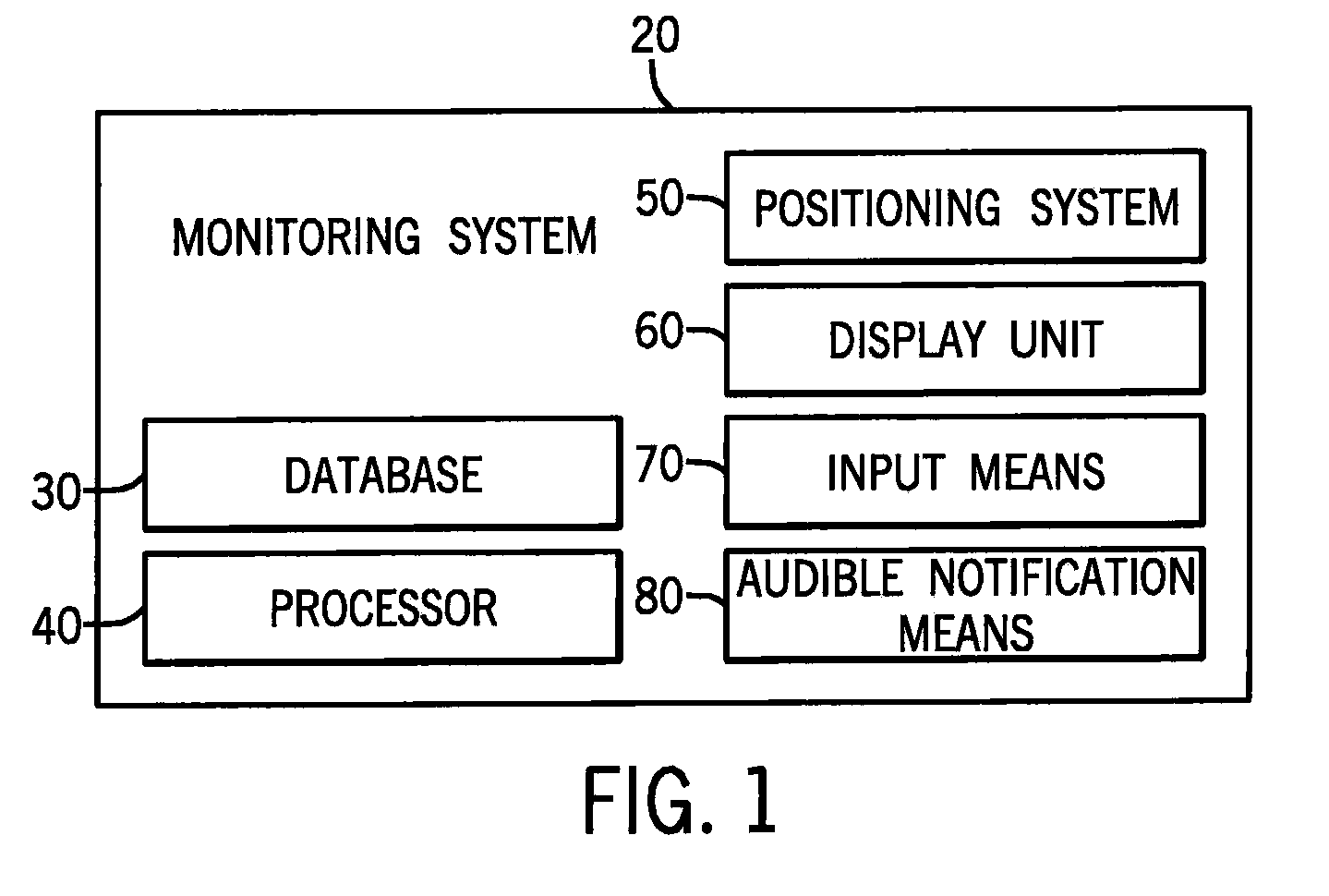Aircraft-centered ground maneuvering monitoring and alerting system
a monitoring system and ground maneuvering technology, applied in the direction of aircraft traffic control, navigation instruments, instruments, etc., can solve the problems of commercial aircraft crash, system is not well suited to prevent runway incursions at many today's larger airports, and collisions are disastrous
- Summary
- Abstract
- Description
- Claims
- Application Information
AI Technical Summary
Problems solved by technology
Method used
Image
Examples
Embodiment Construction
[0043]While this invention is susceptible of embodiment in many different forms, there is shown in the drawings and will herein be described in detail, several preferred embodiments, with the understanding that the present disclosure should be considered as an exemplification of the principles of the invention and is not intended to limit the invention to the embodiments so illustrated.
[0044]While the term “pilot” is used for the sake of simplicity, it should be understood that, in the context of the invention, “pilot” refers to any member of an aircraft flight crew capable of receiving notifications regarding the state of the aircraft. Similarly, the term “operator” refers to any user of a monitoring system constructed in accordance with an aspect of the present invention.
[0045]Referring to FIG. 1, one embodiment of an aircraft ground maneuvering monitoring system 20 is shown. The monitoring system generally comprises a database 30, a processor 40, a positioning system 50, a displa...
PUM
 Login to View More
Login to View More Abstract
Description
Claims
Application Information
 Login to View More
Login to View More - R&D
- Intellectual Property
- Life Sciences
- Materials
- Tech Scout
- Unparalleled Data Quality
- Higher Quality Content
- 60% Fewer Hallucinations
Browse by: Latest US Patents, China's latest patents, Technical Efficacy Thesaurus, Application Domain, Technology Topic, Popular Technical Reports.
© 2025 PatSnap. All rights reserved.Legal|Privacy policy|Modern Slavery Act Transparency Statement|Sitemap|About US| Contact US: help@patsnap.com



